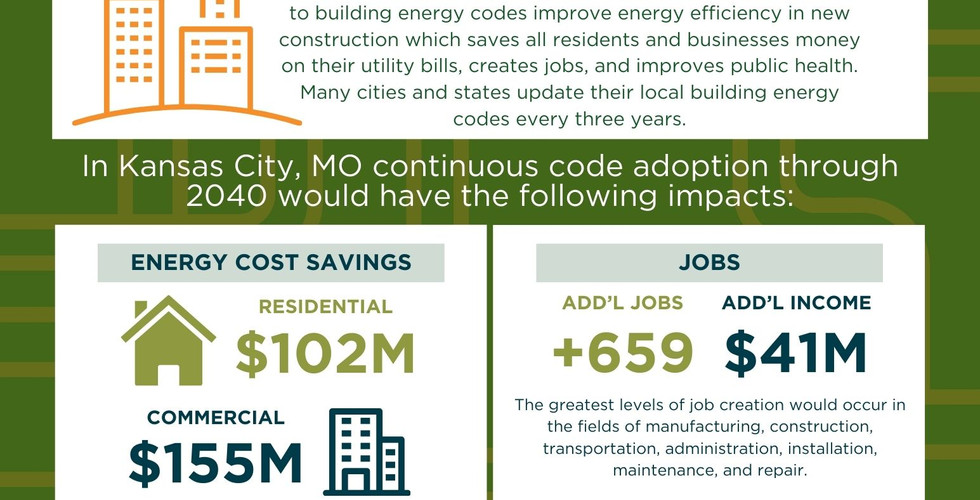Why Building Codes Matter More Than Ever
- admin73680
- Apr 23
- 2 min read

Buildings use a lot of energy. Think about all the homes, offices, and businesses across the country and then the vast amount of electricity and natural gas required for heating, cooling, lighting, and cooking. According to the U.S. Department of Energy, buildings account for about 40% of the nation's total energy use, including 74% of electricity consumption and 35% of carbon emissions.
That’s also why building energy codes matter. They might not be flashy, but they’re one of the most practical and cost-effective ways to cut energy use and carbon emissions, save people money, create jobs, and improve public health.
To help push this forward in the Midwest, Greenlink Analytics collaborated with LivZero, a partner of the Mid-America Codes Collaborative formed by the Metropolitan Energy Center, after receiving a grant through the Department of Energy’s Resilient and Efficient Codes Implementation initiative. The focus? Four cities across two states: Wichita and Kansas City, Kansas, and St. Louis and Kansas City, Missouri.
A Smarter Approach to Safer, Greener Buildings
The goal is to create a workforce development program that supports the adoption of up-to-date building energy codes. These codes not only improve safety, especially in industrial and commercial spaces, but also reduce stress on the energy grid and lower overall energy use.
It’s a long-term effort, but the first steps are already underway.
Greenlink started by creating a baseline assessment of health, housing, environmental, and energy burdens in the neighborhoods across the project cities. This data helps identify areas most impacted by outdated building codes and lays the groundwork for meaningful conversations and future improvements.

What We’re Learning
The findings are eye opening. Take Kansas City, Kansas, for example. Here, energy burdens soar up to 75% higher than the national average. Since energy burden is a clear measure of whether energy costs are affordable, a stat like this shows how these households may struggle to pay their bills.
Here’s the good news: energy burdens in Kansas City, KS, could be reduced by adopting new building codes through 2040. These codes improve energy efficiency, which has great results. Our analysis shows:
Cost savings of $117 million for residential buildings and $E161 million for commercial
Job creation of 592 jobs in manufacturing, construction, transportation, administration, installation, maintenance, and repair with $32 million in additional income
Health benefits would total around $18 million due reduced air pollution.
The data further shows that high energy burdens are significantly correlated with high transportation costs, housing costs, and asthma rates. Adopting modern energy codes in these areas could lead to major cost savings and a better quality of life for residents.
If you want to explore the data more in depth, check out our city fact sheets below to learn more about the energy and equity challenges, and the opportunities for change!
*To see full images, please click on the image to expand*




























Show your loyalty to Rip Wheeler’s iconic fashion with a timeless Rip Wheeler Black Jacket. For an even bolder look, add the durable Rip Wheeler Black Cotton Jacket to your Yellowstone-inspired collection. Trusted quality only at Western Apparel.